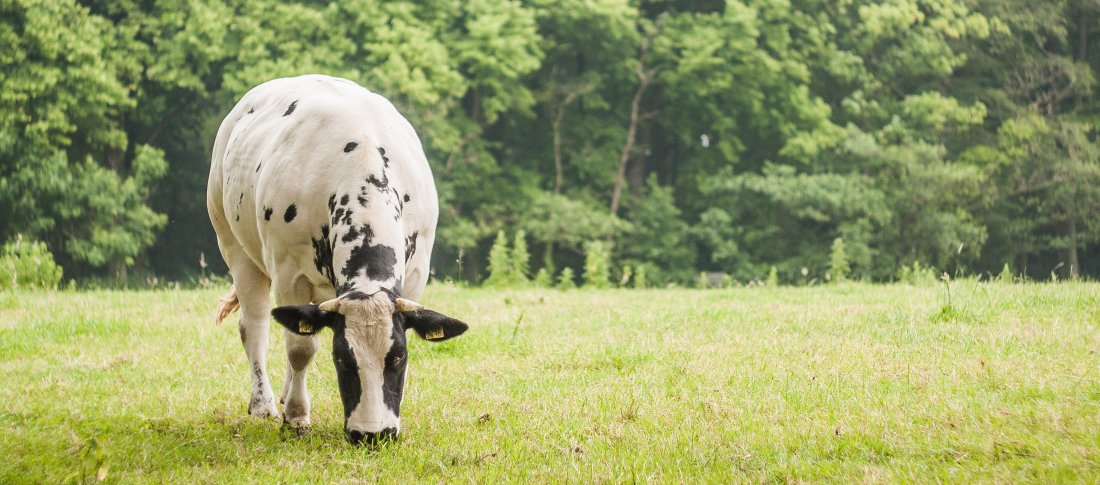Grass alone won’t meet a dairy cow’s nutritional demands. Here’s what the latest research says about concentrate supplements to keep your dairy herd productive, fertile and happy in the spring and summer months.
It’s one of the quintessential visions of rural Britain in the summertime. The sight of a herd of cows happily munching away at the sun-soaked pastures. Yes, grass provides dairy farmers with a cheap and plentiful supply of feed for their herd. But grass alone won’t deliver the nutrition that dairy cows require to stay at their peak – not just in terms of productivity but fertility too. This can result in negative energy balance, body condition loss and reduced milk yield.
The latest research on concentrate use indicates supplements suggests that adding the right type of rumen-protected fats, in the right ratios concentrate, and at the right time, will allow dairy farmers to maximise their use of grass while ensuring your the herd remains productive, profitable and fertile.
Dairy cows have complex nutritional demands that must be balanced carefully if you want to maximise productivity as a dairy farmer. Neglecting key nutrients can harm productivity and profitability in several ways.
We spoke to Dr Richard Kirkland, Global Technical Manager at Volac Wilmar, about hitting the nutritional sweet spot.
Grass is good, but it’s not enough…
Dr Kirkland says:
“Energy supply is the most limiting factor in most grazing situations. Failure to feed cows for their level of production will result in reduced milk yield, low body condition score and poor fertility throughout the season.
“In well-managed early-season conditions with high grass availability, cows have the potential to yield over 20 litres/day from grass alone. However, high levels of production are difficult to achieve without risking major pasture under-utilisation and poor sward quality later in the season.”
To make up for the nutritional shortfall, many dairy farmers turn to concentrate supplements. But knowing what to feed, when to feed it and in what ratios isn’t always straightforward, as Dr Kirkland explains:
“Concentrate supplements can play a key role in enabling cows to not only achieve their yield potential and maintain milk fat and protein levels, but also help to ensure they get in calf and stay in calf. It’s a case of being aware of what to feed and why.”
The nutritional value of grass
Knowing what nutritional value grass provides is a good starting point for making sure your dairy herd receives the right nutrition, at the right time.
Here’s Dr Kirkland.
“Spring grass is typically highly digestible and contains a higher proportion of sugars, while fibre content increases and sugar content decreases as the season progresses. This suggests that higher fibre supplements may be more appropriate in the early season, while higher starch supplements would best balance late-season grass.”
It’s a logical hypothesis. And one that’s been backed up by studies. Researchers at the AFBIa site in Hillsborough, Northern Ireland, compared the effects of high-starch and high-fibre concentrates offered to spring-calving cows in early season and reported lower milk fat and higher milk protein (3.07% and 3.36%, respectively) with cows offered the starch-based cake compared to those offered the fibre-based cake (3.65% and 3.20%, respectively).
How fats can supercharge productivity
Grazing data from the University of Nottingham reported significantly higher milk fat percentage when either starch or fibre-based concentrates were supplemented with a rumen-protected fat. But not all fats are created equal – and knowing which to choose is crucial.
Dr Kirkland elaborates:
“With fat supplementation, we also need to consider the most-appropriate fatty acid profile to include, as the very high-C16:0 supplements may promote milk fat percentage but are not so beneficial to cow condition and fertility. For improved condition and fertility, we need to look at supplements containing rumen-protected oleic acid (C18:1), as present in the larger-grained Megalac calcium salt supplement.”
Fatty acids: it’s all about finding the right balance
As with most elements of nutrition, finding the right balance of fatty acids is the key to getting results in terms of productivity and fertility. But finding that sweet spot doesn’t have to be pure guesswork. Volac Wilmar’s recently-launched supplement, Mega-Max, has been developed based on research from Prof. Adam Lock at Michigan State University, USA.
“The research demonstrated the major benefits of this specific blend of palmitic and oleic fatty acids as a multi-purpose fat supplement across lactation,” concludes Dr Kirkland.
Over to you…
Negative energy balance – and the risks associated with it – are a constant threat when cows are getting the bulk of their nutrition from grass alone. The use of appropriate supplements won’t only negate the risks but will allow your dairy herd to remain productive, fertile and happy throughout the season.
So, what are you waiting for? Step right this way to find out more about Mega-Max and its research-backed benefits for dairy herds.
